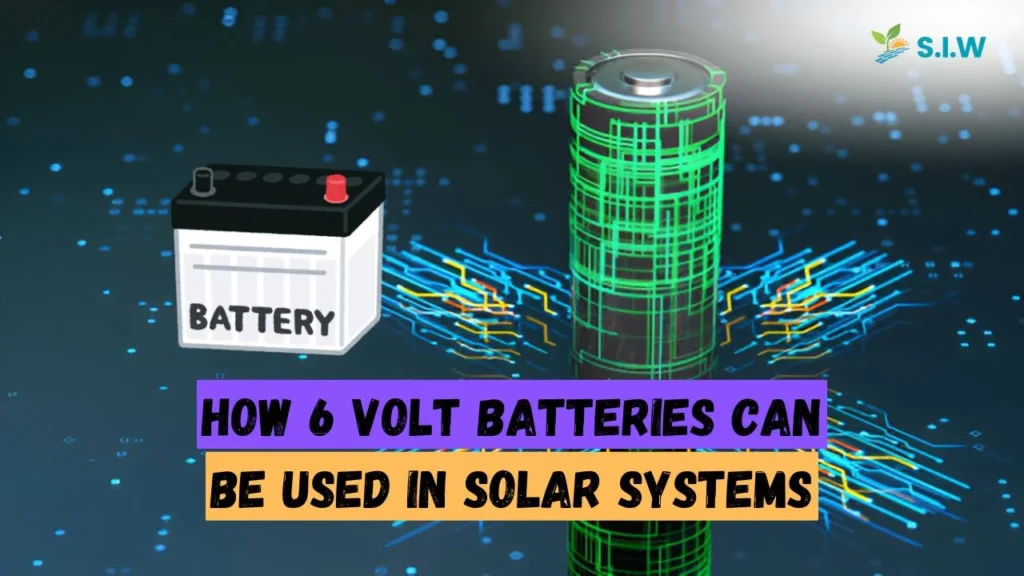In solar power systems, battery choice is crucial. 6-volt batteries are increasingly popular for their durability and efficiency. This article explores how 6-volt batteries can be effectively incorporated into solar power setups, detailing their benefits, setup options, and maintenance best practices.
Why 6 Volt Batteries are Ideal for Solar Systems
6-volt batteries are well-suited for solar setups due to their high cycle life, deep discharge capability, and durability under regular usage. Here’s why they are often preferred over other options:
- Higher Durability: Designed with thicker plates, these batteries withstand deep discharges better than their 12-volt counterparts.
- Efficient Charging and Discharging: Ideal for solar, where energy availability varies. They offer stable performance, especially in deep cycle applications.
- Modular System Design: 6-volt batteries can be connected in series or parallel for custom voltage and capacity, making them versatile for various solar setups.
Understanding Battery Configurations in Solar Systems
To effectively use 6-volt batteries in a solar setup, it’s essential to understand configurations and wiring options to achieve optimal voltage and storage capacity.
Series Configuration for Higher Voltage
When connecting batteries in a series, the voltage adds up while the capacity remains the same. Connecting two 6-volt batteries in series gives a 12-volt output, which is the standard voltage for most small solar applications.
Example: Connecting four 6-volt batteries in series would yield a 24-volt system, ideal for systems requiring higher voltage input.
Parallel Configuration for Higher Capacity
In parallel, the voltage remains the same, but capacity increases, extending usage time.
Example: Connecting four 6-volt, 200 Ah batteries in parallel will provide 6 volts and 800 Ah.
Series-Parallel Configuration for Optimal Voltage and Capacity
Combining series and parallel connections allows for achieving higher voltage and capacity simultaneously.
Example: Eight 6-volt, 200 Ah batteries configured in a 24-volt, 400 Ah system (four batteries in series connected in two parallel strings) support medium-sized solar setups.
Choosing the Right 6 Volt Battery for Solar Systems
Selecting the right battery type depends on your energy requirements, budget, and intended usage. Common types include:
- Flooded Lead-Acid (FLA): Most economical and suitable for users who can perform regular maintenance.
- Absorbed Glass Mat (AGM): Spill-proof, offering better safety and suitable for medium to high-power demands.
- Gel Batteries: High performance in extreme temperatures, but can be costlier.
Installation Tips for 6 Volt Batteries in Solar Systems
- Use Proper Cables and Connectors: Ensure all cables can handle the intended current.
- Ensure Proper Ventilation: Avoid overheating by installing batteries in a ventilated area.
- Secure Battery Bank Connections: This minimizes the risk of disconnections due to vibrations or loose connections.
Maintenance of 6 Volt Batteries in Solar Applications
Regular Inspections and Cleaning
- Inspect Terminals: Check for corrosion monthly.
- Electrolyte Levels: Only required in flooded batteries, this should be done every 3-6 months.
Charging and Discharging Best Practices
- Avoid Overcharging: Use a charge controller.
- Perform Periodic Equalization: Equalizing batteries once every few months can prolong battery life by preventing sulfate buildup.
Advantages and Limitations of 6 Volt Batteries in Solar Systems
Advantages
- Longer Lifespan: Ideal for frequent deep cycling.
- Better Performance in Cold Climates: Compared to 12-volt options, 6-volt batteries can operate efficiently in lower temperatures.
- Scalability: Perfect for scaling up the solar system based on capacity and voltage needs.
Limitations
- Higher Initial Cost: 6-volt batteries can be more expensive.
- More Space Required: Additional batteries require more space, especially in larger setups.
Frequently Asked Questions
Can I Use 6 Volt Batteries in an Off-Grid Solar System?
Yes, 6-volt batteries are often used in off-grid systems for their durability and deep cycling capabilities.
How Many 6 Volt Batteries Do I Need?
This depends on your system requirements. For a 12-volt system, connect two 6-volt batteries in series. For larger setups, calculate based on required voltage and storage capacity.
How Long Do 6 Volt Batteries Last?
6-volt batteries typically last 5-10 years, depending on maintenance and usage conditions.
What is the Best Type of 6 Volt Battery for Solar?
AGM and Gel batteries are preferable due to their low maintenance and durability.
Can I Mix 6 Volt Batteries with Other Voltages?
No, it’s essential to match battery voltage and capacity to avoid damage and inefficiency.
By selecting the right 6-volt batteries and configuring them effectively, you can optimize solar system performance while ensuring long-term sustainability.








